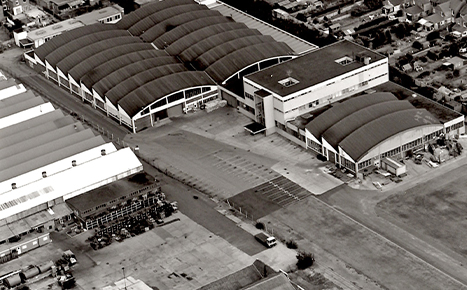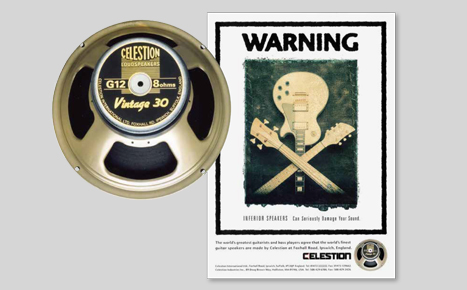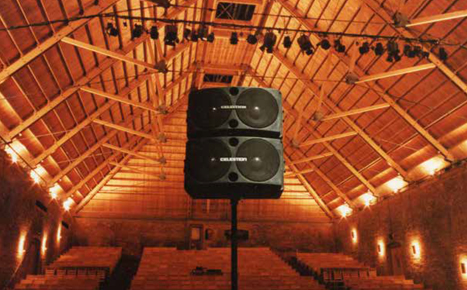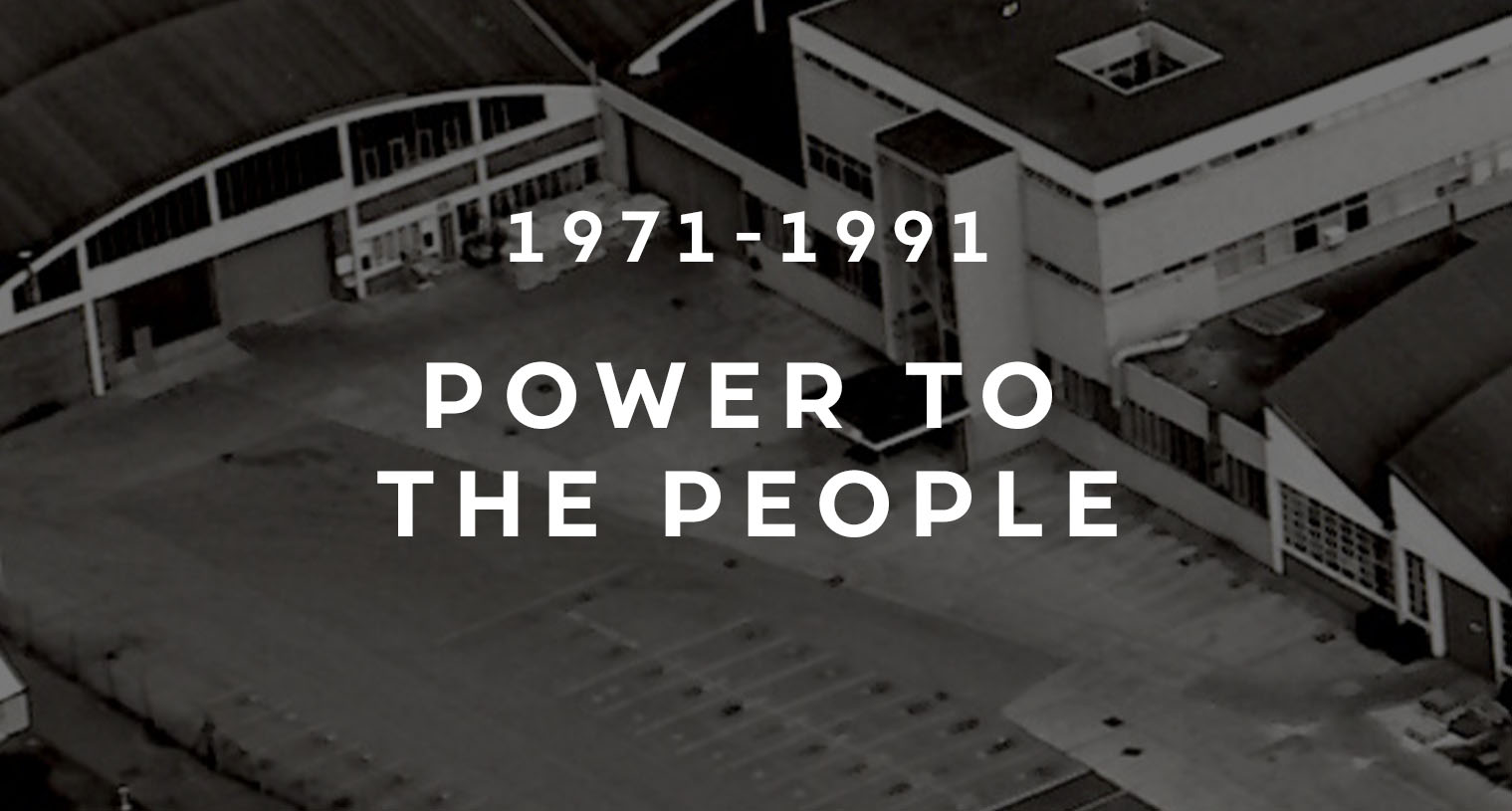Two Decades of Turbulence
During the early days following the transfer between old and new factories, product supply and distribution raised challenges. It was often necessary to dispatch a vehicle early in the morning from Ipswich to make the 90-mile run through London to Thames Ditton, carrying the previous day’s production run of drive units for HiFi speakers, ready to be loaded into cabinets. But as the weeks passed, the interior of the Ipswich works began to house ever more sophisticated production machinery and measurement systems, and more staff were engaged, first to be trained, and then to operate the lines.
The incorporation of the company as Celestion Industries and its resultant appearance on the London stock market necessitated regular reporting of financial information, and in the early 1970s company results were impressive. After beating its forecast by 54% in its first fiscal year, in 1970–1971 Celestion lifted pre-tax profits by a further 71%—and this even though Foxhall Road was still running some 25% below full production capacity. Pre-tax profits were higher than anticipated, with the impetus said to be still coming from the industrial public address business, despite the runaway success of guitar speakers and Ditton HiFi.

Staffing levels at Celestion reached a peak in January 1974, with a total of 907 employees across the three sites, including a new production facility at Hadleigh Road Trading Estate.
If HiFi and guitar chassis speakers represented the more glamorous side of the business, sales in the industrial and commercial public address sector remained highly significant, with customers including the Royal National Lifeboat Institution, the Armed Forces, coal mines, railways and the police.
But the boom wasn’t to last when, in the early ‘80s, an energy crisis akin to the mid-70s again drove up oil prices and inflation grew by 20%. In response, the company took a long, hard look at its approach to HiFi and set out to develop a truly HiFi product that the mass market could afford.
The Golden Decades of Hi-Fi
Enter the game changing SL6, retailing at just £250 a pair, to rave reviews from the HiFi press. It would prove to be a bellwether in the HiFi world, and one which owed its success to the company’s forward-thinking investment in laser interferometry.
With its innovative metal dome tweeter, the SL6 heralded a multi award-winning series of Celestion speakers that would continue to dominate the HiFi landscape throughout the 1980s, and see the development of other innovative technologies including Acoustic Ribbon Technology.

G12 and the Quest for More Power
As the 1970s progressed, it was the G12M and G12H models that remained at the forefront of guitar speaker tone. Thanks to their adoption by the majority of British amplifier firms, these speakers were cemented firmly in place as the voice of rock ’n’ roll for all those seeking the ‘British tone’, helping Celestion to remain the foremost name in guitar speakers. As a result, dozens more soon-to-be-legendary players joined the pantheon of Celestion players during the 70s, a small sample of whom included Brian May of Queen, Joe Perry and Brad Whitford of Aerosmith, Angus and Malcolm Young of AC/DC and Edward Van Halen.
As the decade wore on, amps became more powerful and overdrive more savage, and there was an increasing need for speakers of greater power capacity. A speaker’s power handling is determined to a large extent by the heat-resistant properties of its component parts—in particular, the former around which the voice coil is wound.
The G12/50, first supplied in 1974 with its distinctive yellow chassis and black rear can, was probably the first guitar speaker to feature a fibreglass voice coil former, determining its 50W power rating. It was also the first G12 speaker documented as featuring a black (rather than a green) can. This was followed by the G12/75, which later led the way to a full range of new-style G Series speakers that superseded the former G12M, G12H, et al.

The Vintage 30
Creating the signature sound of 60s guitar was one thing—emulating it nearly a quarter of a century later, when times (materials, suppliers and manufacturing processes) had moved on, was quite another. But when Marshall came calling once more, Celestion was required to respond with a new speaker that had a sound that was comfortingly close to the old sound.
The laser system was used to analyse the behaviour of the original Blue cone and, more than anything else, this was the key resource that led to the development of the Vintage 30. ‘It was especially good at looking at cones,’ remembered Celestion Development Engineer Ian White. ‘We used that data to form a precise model of the vintage speaker’s characteristics.’ A crucial step in re-formulating the cone.
‘The speaker really took off and I felt very proud.’

Sound Reinforcement Systems
With the disco era in full swing, Celestion entered the world of complete sound reinforcement systems in 1987 with the development a large system for a local Roller Disco. The company had already flirted with the idea of sound reinforcement speakers, having offered several column speaker models during the 1960s, and by 1980 it had marketed the 500W P1 system as a compact and roadworthy touring system.
However, it was the successful, large-scale system built for Rollerbury that had proven to be the real catalyst, and by the mid-80s the concept of Celestion Systems had begun to be taken more seriously.
The resultant design was for a cabinet that contained 2in x 8in drivers, which incorporated a decoupled coil and rigid hemispheric concentric centre dome for extended HF response. The cabinet would come complete with a controller/limiter that dynamically adjusted the low-frequency response to optimise bass levels and protect the drive units from both excessive LF input and thermal overload. This was the SR1, the first product in the long-running and revolutionary SR Series.
And as the 1990s dawned, the modern identity of the company was becoming clear: forged in Britain and nurtured and grown overseas, no more so than in the United States, where the company had finally begun to take root. Celestion was now seen as an innovative and international brand, both consumer and business-to-business focused; recognised for music production and reproduction. This was the era that brought the modern Celestion into being.




